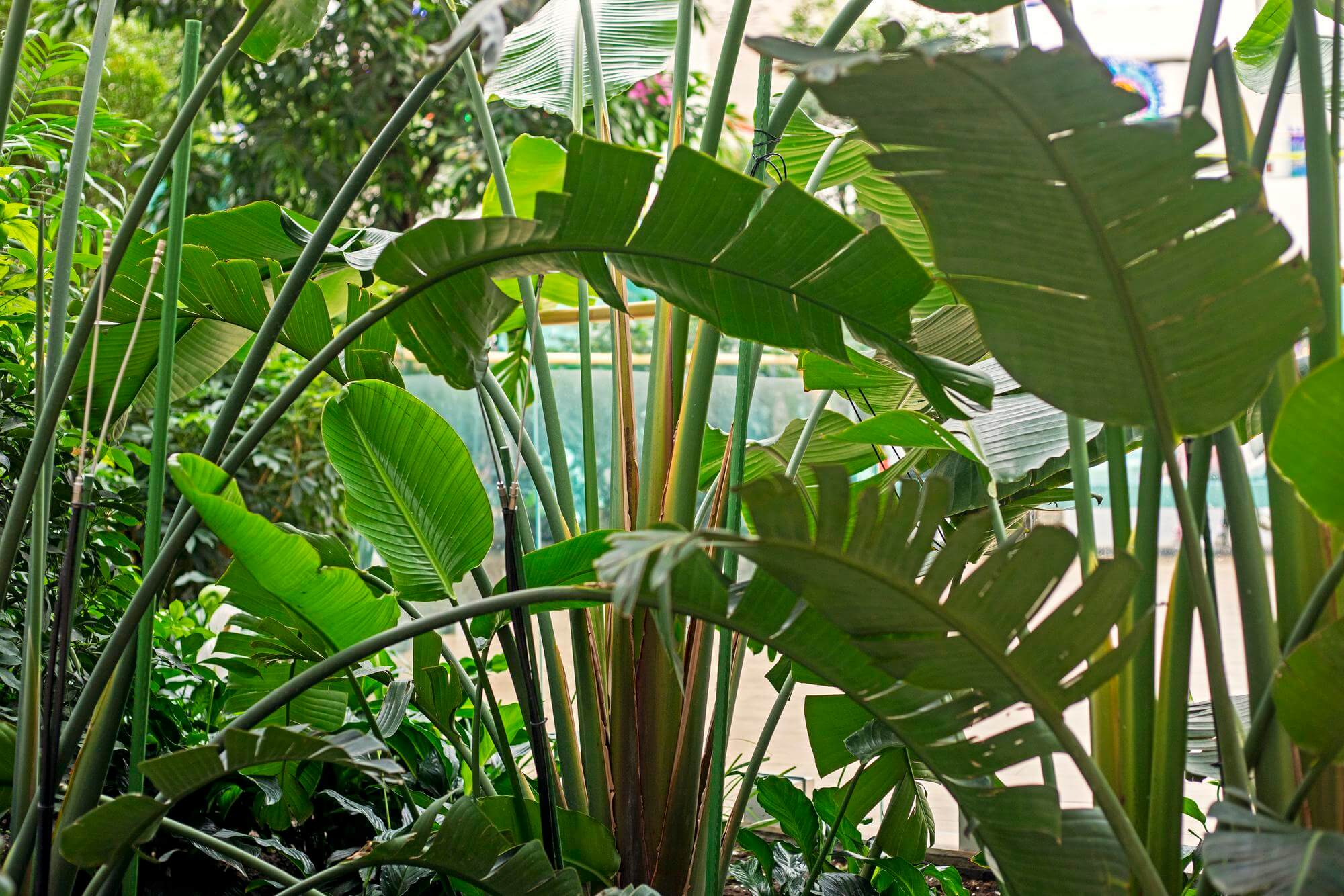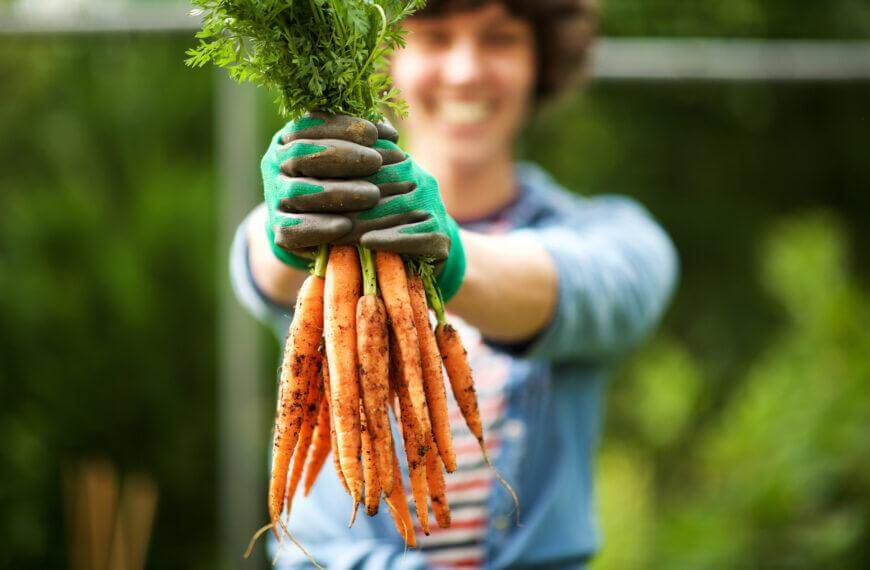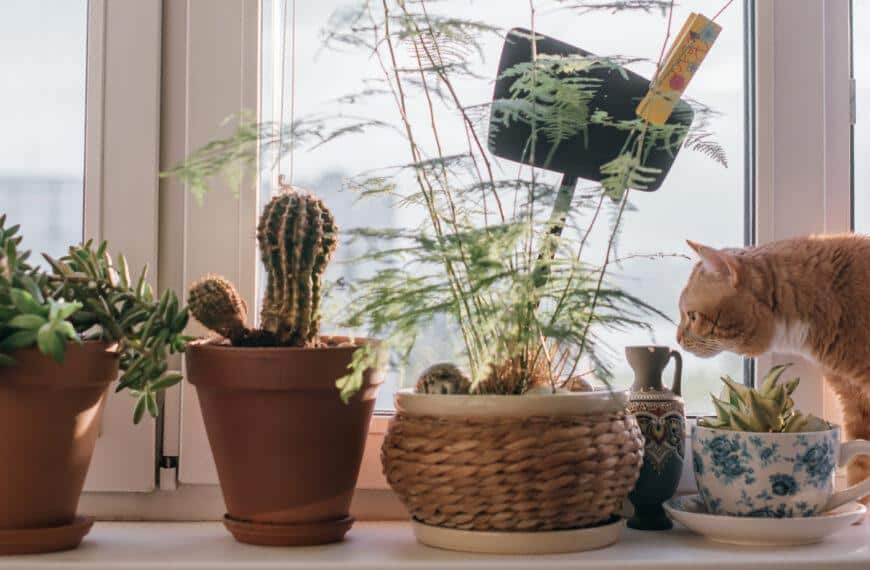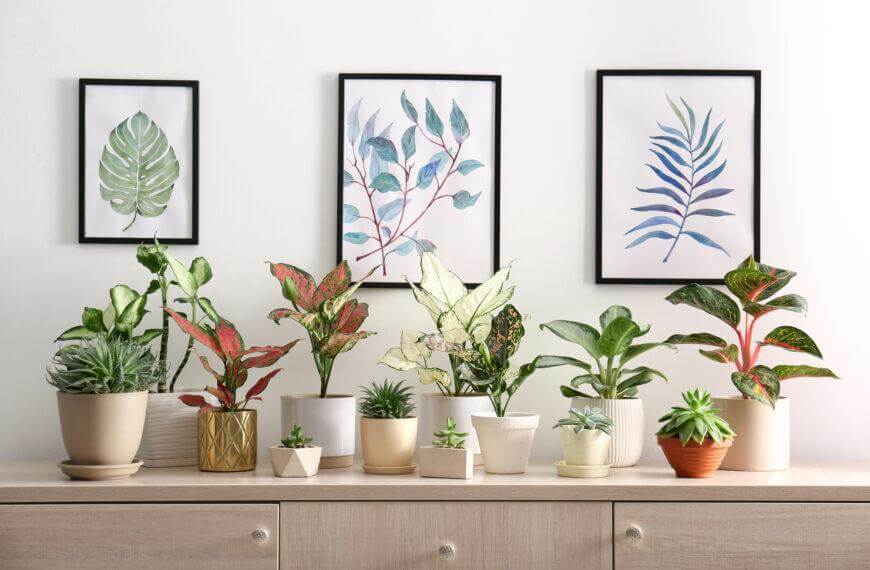Choosing the Right Plants for Your Indoor Garden Oasis
To design your dream indoor garden oasis, you need the right plants. Choose wisely with the help of “Choosing the Right Plants for Your Indoor Garden Oasis” section. This section covers various factors to consider when choosing plants and introduces the best plant options for low-light environments, sunny environments, and air purification.
- Choosing the Right Plants for Your Indoor Garden Oasis
- Creating the Ideal Environment for Your Indoor Garden Oasis
- Materials and Tools Needed for Designing Your Indoor Garden Oasis
- Designing the Layout and Arrangement of Your Indoor Garden Oasis
- Regular Maintenance and Care of Your Indoor Garden Oasis
- Frequently Asked Questions
Factors to Consider When Choosing Plants
Gardening indoors requires thought and decisions. Before picking plants for your indoor garden, some factors must be taken into account. These include: space size; light amount; temperature; humidity; soil quality and drainage.
- Space Size: Work out how much room you have available for your garden before selecting plants. Big plants might not be good for small areas.
- Light Amount: Check the amount and intensity of natural light your home gets and pick plants which can manage in those conditions. Low-light plants are ideal for homes without much sun.
- Temperature and Humidity: Different plant species need different temperatures and humidities. Be mindful of this when choosing your indoor garden plants.
- Soil Quality and Drainage: The soil type, aeration, water retention, pH levels, and drainage system all help keep your indoor garden healthy. Select species that match the current soil or ones which can adjust to them properly.
Your personal preferences should also be taken into account when choosing indoor gardening plants as it will affect how enjoyable this is in the long run.
My mum was a keen gardener when I was growing up and always had a wonderful outdoor garden. When we moved to an apartment with no outdoor area, she was disappointed. But she soon found the joy of creating an indoor oasis with her favorite plants. She chose species suitable for the limited space and cared for them every day, turning our apartment into a comfy paradise in the city. Even low-light places can be a lush jungle with the right plants – no need for a magic lamp or magical abilities.
Best Plants for Low-Light Environments
Indoor Oasis: The Perfect Plants for Dimly Lit Spaces.
Still think you can’t have a flourishing garden in a low-light area? Think again! Here are some plants that can thrive in dimly lit spaces:
- Snake Plant: Ideal for beginners, this plant can survive anywhere.
- Peace Lily: Purifies the air and only needs weekly watering.
- ZZ Plant: Tolerates neglect and low light. Adds elegance to your indoor garden.
- Philodendron: Adaptable, requires limited sunlight, infrequent watering and can even climb walls with support.
Remember to check drainage and pot size per the plant’s needs. For a unique look, try Chinese Evergreen or Pothos – with their variegated leaves in different green hues.
A friend once told me about their devil’s ivy. They kept killing plants, but this one defied the odds and flourished under fluorescent lights! It grew bigger and thicker each week and quickly became their pride and joy.
Brighten your life with these sun-loving plants. Vitamin D and tan lines are the perfect combo!
Best Plants for Sunny Environments
For your sunny indoor garden, it’s important to pick the right plants. Here are some top choices:
- Succulents like aloe vera and jade plant. These can survive in bright and dry areas.
- Herbs like basil and thyme for sun and flavor.
- Tropical plants such as bird of paradise and hibiscus. These can add color to your decor.
Be careful with plants that don’t like sun. Ferns and peace lilies don’t do well in direct sunlight. My friend put her Christmas cactus in direct sunlight without knowing its needs. It wilted and needed special care to recover. So, make sure you research each plant’s light requirements before getting them.
Your lungs will thank you too! Plants are natural air filters.
Best Plants for Air Purification
Air purification is key when it comes to indoor gardening. The plants you choose depend on their ability to cleanse toxins. Here are some top air-purifying picks:
- Spider Plant – Absorbs formaldehyde and xylene. Low maintenance.
- Snake Plant – Adapts to different lighting. Clears benzene and trichloroethylene.
- Aloe Vera – Clears benzene and formaldehyde. Plus, great for skincare!
For the best air quality, have a variety of plants that work together. But don’t forget! Proper care is needed for them to work their toxin-removing magic. Give your plants a spa day and create an oasis they won’t want to leave!
Creating the Ideal Environment for Your Indoor Garden Oasis
To design your dream indoor garden oasis with optimal growth conditions, this section will guide you on creating the ideal environment. The sub-sections include optimizing lighting conditions, humidity control, temperature regulation, watering, and soil considerations. Each sub-section plays a crucial role in creating a well-designed indoor garden oasis.
Optimizing Lighting Conditions
To grow a thriving indoor garden, the right lighting balance is key. Light brightness and wavelength affects plant health, growth, and development. LED grow lights are an excellent option to imitate natural sunlight in dim areas. They are energy-efficient and have customizable lighting programs. But, keep them at an appropriate height and distance to avoid burning or under-exposure.
Natural light from windows is also important for plants, but different species may need different amounts of exposure and shade. Keeping plants at the right distance from the window will ensure steady natural light.
You must place and time the lights properly for the best results. Make sure plants get 12-16 hours of light per day for optimum growth. Pro tip: Position your grow lights overlapping with natural light sources for extra benefits. Lastly, create a humid environment for plants like a steam room – minus the talking!
Humidity Control
Achieving Optimal Moisture is Critical
It’s key to maintain the right humidity level when indoor gardening. Too much or too little moisture can hurt plants. Here are 6 tips to get it right:
- Buy a hygrometer to measure the moisture.
- Use a humidifier if the air is dry.
- Don’t over-water, which can lead to bacteria.
- Put pebble trays with water under the plants.
- Misting foliage can add moisture.
- Aerate the room to reduce fungus growth.
Creating an optimal environment for plants also needs specific temperature control, light management techniques, and fertilizer use. Keep an eye on the leaves and soil daily. That way, any issues can be quickly resolved if detected early.
Your plants need air conditioning too! Otherwise, you’ll see them sweating like a sinner in church.
Temperature Regulation
Creating the Perfect Climate for Your Indoor Garden.
Temperature regulation is key to providing plants with ideal conditions. Place plants in well-ventilated areas that get enough sunlight. Use artificial lighting in darker spots too.
Pay attention to seasonal changes. Incorporate heating systems in colder months. Insulate windows and doors to prevent cold air drafts.
Make your home a flourishing sanctuary by giving your indoor garden the right temperature for optimal growth. Enjoy the wonderful benefits of having indoor greenery!
Don’t forget, plants need water like you need coffee – often and lots of it.
Watering and Soil Considerations
Water Absorption and Soil Quality: To ensure a healthy and fruitful indoor garden, water absorption and soil quality are key. Here are five tips to keep in mind:
- Choose soil that allows water to drain away.
- Water plants according to their needs – some like damp soil, while others prefer dryer soil.
- Allow the top layer of soil to dry out between waterings to avoid root rot.
- Liquid or soluble fertilizers are safer than underground feedings.
- Mineralized water (tap, spring, or rainwater) is better than distilled water.
Temperature, humidity, and air circulation influence moisture retention, too. For clean air, install fans around the room.
Start Now: Get going now for a fantastic indoor garden! Involve loved ones by teaching them about different types of plants. Share your journey on social media with #MyIndoorGardenJourney and join our community.
Remember, it takes more than a green thumb to create an indoor garden oasis!
Materials and Tools Needed for Designing Your Indoor Garden Oasis
To create your indoor garden oasis, you need specific materials and tools. Containers and planters are crucial for planting, while soil and fertilizers help to nourish your plants. You’ll also require tools for maintenance and care, such as pruning scissors and watering cans. Finally, accessories help enhance the aesthetics of your indoor garden, elevating it from a simple green space to a relaxing oasis.
Containers and Planters
Designing an indoor garden? It’s key to select the right receptacles! Here’s what to keep in mind:
- Drainage holes? Must-have.
- Lightweight? Yes please! Makes it easier to manage water overflow.
- Style-wise? Go for something that fits your design scheme.
- Size? Depends on the plant species.
- Mix & match? Sure! Creates visual interest.
Your choice of containers and planters can greatly affect the health and growth of your plants. So, explore the options and pick whatever fits your plants’ needs and your style. Don’t miss out on creating an oasis with the right containers! Lastly, get your hands dirty with quality soil and fertilizers – and watch your indoor garden flourish!
Soil and Fertilizers
For successful cultivation of indoor plants, the right soil and fertilizers are essential. Get a nutrient-rich mix with organic material, sand, and clay. This ensures good drainage and support. Use the right fertilizer to make sure your plants are healthy. There are many options available for different plant types.
Soil acidity and alkalinity must be ideal for specific plants. Soil testing kits help you determine and adjust soil pH. Decide if you want to use organic or inorganic fertilizers. Organic varieties avoid chemical buildup and foster a healthy ecosystem.
When selecting fertilizers, look for slow-release ones. This reduces the frequency of application needed. You can also add beneficial bacteria to your planting medium. This helps break down plant matter and create rich humus.
Pro Tip: Apply foliar fertilizers directly on leaves, not on the potting medium used for planting. This ensures optimum growth conditions.
Having green fingers doesn’t necessarily mean you’re good at keeping houseplants alive.
Tools for Maintenance and Care
To keep your indoor garden looking great and healthy, you need specific tools. Here are some must-haves:
- Pruning Shears: Cut back overgrown or damaged parts of a plant. This will help it grow strong.
- Watering Can: Choose a suitable can to regulate water distribution without harming the soil.
- Gardening Gloves: Protect your hands from dirt, thorns, and poisonous plants.
- Fertilizer: Add nutrients that soil may lack, for better growth and blooms.
Organic fertilizers are better than chemical ones, as they provide more benefits and reduce their ecological footprint. Rebecca Bullene, Founder of Greenery NYC, suggests spraying white vinegar on weeds as an eco-friendly way to get rid of them.
To complete your indoor garden oasis, add stylish accessories to make it a sanctuary.
Accessories for Décor and Aesthetics
As you design your garden paradise indoors, think of the Accessories as Aesthetic and Decoration. Here are 3 things to remember:
- Containers: Pick beautiful pots that go with your plants. Mix and match different sizes, colors and textures for a cool and stimulating look.
- Decorative objects: Put figurines or sculptures to have a unique spotlight in the garden. Be careful not to overfill the space and keep the plants in focus.
- Lighting fixtures: Lighting is vital in showing off your garden. Try adding a cozy atmosphere with ambient light.
When selecting accessories, ensure they won’t take away from the plants’ beauty or purpose. To get a balance, keep the accessory designs minimal but attractive.
Pro Tip: Group small items like figurines or cuttings together to highlight them as decoration pieces while keeping the plants in the spotlight. Arrange plants like playing Tetris – only the stakes are higher and you can’t just hit the reset button.
Designing the Layout and Arrangement of Your Indoor Garden Oasis
To create your ideal indoor garden oasis, you’ll need to carefully consider the layout and arrangement. In order to achieve this, the following sub-sections will help you plan your space, choose plant combinations, create visual interest with heights and textures, and add decor and personal touches to your green space.
Planning Your Space
When planning your indoor garden, think about the space you have and what you want to achieve. Measure, assess lighting and place plants according to their needs. Don’t forget ventilation and irrigation.
Make sure the design looks nice and is easy to maintain. Group plants according to lighting or type, e.g. herbs and flowers. Include accessories like a vase or light source for extra appeal.
Vertical gardening is great for those with limited floor space. Maximize the space you have and add lots of greenery.
Tinder your plants for a wild and crazy indoor garden!
Choosing Plant Combinations
Optimize the combination of plants in your indoor garden oasis by keeping in mind the principles of natural light, humidity levels and the purposeful arrangement. Contrast textures, such as smooth against rough, to create visual interest. Complimentary colors are critical when selecting plant pairings. Vary the height and size of plants to create a natural flow.
The beauty lies in the details. Water use and growth speed affect which combinations work best. Implement soil moisture sensors or group plants that require similar care routines. Carefully combine nature’s specimens into aesthetic palettes to create a haven of joy. Add height and texture to your indoor garden oasis and be amazed!
Creating Visual Interest with Heights and Textures
Introduce diverse textures and heights to boost the aesthetics of your indoor garden. Pick plants with different heights and foliage textures to give your space depth and dimension.
Taller plants, such as Dracaena marginata, Ficus lyrata, or Yucca elephantipes, can add eye-level interest. Low-growing plants like ferns and succulents add texture. Include planters or trellises to diversify and elevate your plant display.
Include colors, patterns, or leaf shapes for contrast and pop. Don’t forget to sync the textures and heights for maximum effect. And for the ultimate personal touch, add a gnome dressed as your favorite superhero!
Adding Décor and Personal Touches
To make your indoor garden special, include decorations that match your style. Try pottery, sculptures, lighting, or wall art for a creative touch. Combine colors and textures that look great with your plants. Keep it simple and use natural materials to blend in. Create focal points with a feature piece or group similar items. Don’t clutter the space- choose a few pieces that give an atmosphere of nature.
Pro Tip: Remember, when picking decorations, think about how easy they will be to maintain while taking care of your plants. Don’t ghost your plants – your indoor garden needs love!
Regular Maintenance and Care of Your Indoor Garden Oasis
To ensure that your indoor garden oasis continues to thrive, it’s important to regularly maintain and care for your plants. This includes watering and feeding your plants, pruning and trimming to promote healthy growth, pest and disease control to prevent damage, and cleaning and maintaining your garden space for a beautiful and welcoming environment.
Watering and Feeding Your Plants
To keep your indoor garden in mint condition, it’s essential to give your plants the right amount of water and nutrition. We suggest regular watering and feeding routines that suit each plant’s needs. Here’s a 5-step guide to help keep your plants healthy:
- Check moisture levels before watering.
- Water plants until water runs out their drainage holes.
- Let soil dry slightly between waterings, but don’t let it dry out.
- Feed plants with an appropriate balance of nutrients.
- Avoid over-fertilizing, it can hurt or kill your plants.
Different plants have different desires. Some need more water while others need less. Excess moisture could cause root rot or fungal growth.
For the best outcomes, use quality potting soil mixed with organic stuff like compost or peat moss. Use a self-watering container or add a layer of mulch on the soil to help retain moisture.
By following these watering and feeding guidelines, your garden will look lush and stay healthy. Just like hair, trimming your plants keeps them from turning into a jungle.
Pruning and Trimming
Proper Care and Maintenance of Your Indoor Greenery needs Tending and Snipping. Pruning is the removal of unhealthy leaves, stems, and flowers. Trimming is giving plants a neat look. Here’s a four-step guide:
- Get the right Tools: Shears or scissors for clean cuts.
- Identify what needs Cutting: Cut off dead parts often.
- Cut it Right: Cut at 45 degrees above node while repotting or relocating. Cut straight across if just maintaining height and look.
- Apply Anti-fungal Sealant: After pruning or entering dry period, apply sparingly.
Avoid using diseased foliage near healthy parts. Pruning makes Bonsai Trees last longer. It was popular in China’s Tang Dynasty. Insecticide can protect your plants.
Pest and Disease Control
Indoor Garden Health Maintenance is all about protecting plants from pests and diseases. Here’s how:
- Use high-quality soil with good drainage and nutrients.
- Check plants for wilting, yellowing, or browning foliage.
- Separate infected plants to stop the spread.
- Try natural remedies like neem oil, garlic spray, and insecticidal soap.
It’s also important to understand each plant species. This can help you spot problems before they occur. A clean garden helps prevent infection. Don’t use hands to remove dead leaves or flowers, as this can spread spores and microbes.
Pests can harm both humans and plants. Proper identification early is key. For example, spider mite infestation can cause respiratory distress. Knowing the history of the issue can give insight and help plan accordingly. Insecticide resistance is a major challenge in the US today, so pest-resistant varieties are ideal for indoor gardens. Keep it clean for a happy garden and less chance of growing something unexpected!
Cleaning and Maintaining Your Garden Space
Having a stunning indoor garden is a breeze if you keep it clean and in check! Neglected gardens can invite pests, spread diseases, and deplete air quality. Here’s a 4-step guide for maintaining your oasis:
- Dust all surfaces regularly.
- Inspect plants for pests or diseases.
- Clean leaves with a damp cloth or spray bottle.
- Trim dead leaves, stems and flowers.
Good ventilation systems are key to warding off mold and fungus. Remember to water plants thoroughly, but not too much – over-watering can lead to root rot. Use potting soil rich in nutrients and organic fertilizers. Additionally, select plants that fit well with the conditions in your house. Enjoy watching your oasis thrive!
Frequently Asked Questions
Q: What is an Indoor Garden Oasis?
A: An indoor garden oasis is a personalized collection of plants and decorations that make your indoor space feel like a beautiful and calming garden.
Q: What are some benefits of having an Indoor Garden Oasis?
A: Indoor gardens have been proven to reduce stress, improve air quality, and boost creativity and productivity. Plus, they add a beautiful and natural touch to any indoor space.
Q: How do I start designing my Indoor Garden Oasis?
A: Start by thinking about what kind of vibe you want your space to have. Do you prefer a lush jungle or a minimalist zen garden? Then, consider factors like lighting, temperature, and the amount of space you have to work with.
Q: What are some easy-to-care-for indoor plants for beginners?
A: Some great options for low-maintenance indoor plants include succulents, snake plants, pothos, and ZZ plants.
Q: How can I incorporate natural elements into my design?
A: You can use natural materials like wood, stone, and terracotta to add texture to your space. You can also incorporate natural scents like essential oils or fresh herbs.
Q: What are some creative ways to display my plants?
A: Consider hanging plants from the ceiling or placing them on floating shelves. You can also use unique planters like vintage teapots or repurposed Mason jars.




